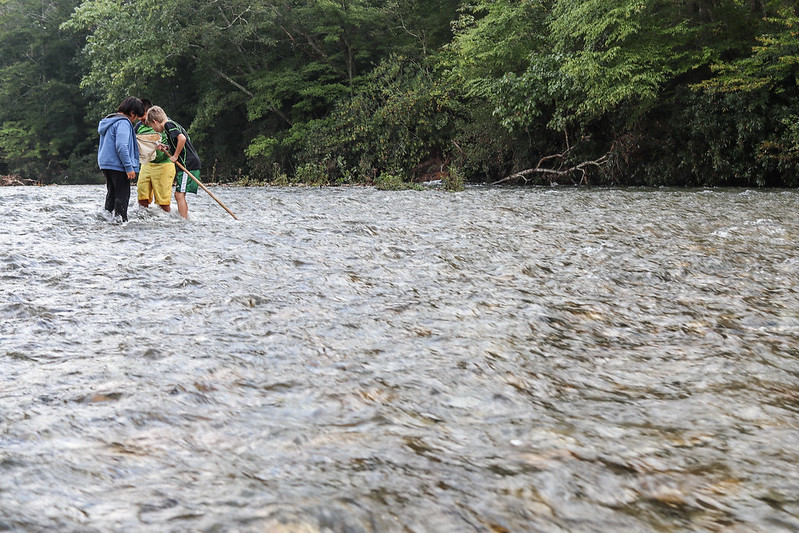Acid Rain and the NADP

Credit: G. Peeples/USFWS
The purpose of Air Quality Awareness Week is to bring attention to air pollutants that damage human health and environmental health.
Background
As the Industrial Revolution progressed, scientists studying lakes in Northern Europe and the United States made a surprising discovery: air pollution from burning fossil fuels had reached such high levels that it was altering the chemistry of rain. Acid rain falling in the Adirondacks made lakes, streams, and rivers too acidic to support fish and amphibians. Acid rain falling in sensitive forests like the high-elevation spruce forests along the Appalachian Mountains weakened, injured, or killed these sensitive trees.
The National Trends Network began collecting rainwater in buckets in 1978. The acid rain documented by this network contributed to air quality legislation like the Clean Air Act Amendments of 1990. This and further air quality regulations have significantly reduced emissions of nitrogen and sulfur dioxide in the United States, and have improved rain chemistry in many parts of the United States. In the Adirondacks and New England, some lakes and streams are now recovering.
Today, the National Trends Network has about 250 sites located in the United States and Canada. While the network has documented declines of acid rain, it has also documented increasing ammonium concentrations from agricultural intensification and the appearance of new forms of pollution like microplastics. Every Tuesday, people go out and collect the previous week’s rain and snow from each site’s bucket and mail it to the lab in Wisconsin. At the lab, chemists in the National Atmospheric Deposition Program (NADP) test the rain for different chemicals and share the information they collect with the public.
Acid rain resources to share:
The NADP education page has information on the history, causes and effects of acid rain, as well as pictures and presentations for students: https://nadp.slh.wisc.edu/education/
The EPA has a page with interactive maps that let you compare 1990 acidic emissions (sulfur dioxide and nitrogen oxide) and deposition (sulfur deposition) with 2020 emissions and deposition. The changes in sulfur are dramatic: https://www.epa.gov/acidrain/acid-rain-program-results
The Adirondack Council’s subject page has good general information about acid rain effects as well as a history of how acid rain has affected the region: https://www.adirondackcouncil.org/page/acid-rain-86.html
An article on how long-term monitoring at Jordan Pond in Acadia National Park shows recovery from acid rain: https://www.nps.gov/articles/jordan-pond-dips-into-big-data.htm
Suggested Social Media Posts:
Facebook and Twitter:
Every Tuesday, hundreds of staff and volunteers collect the previous week’s rain and snow from buckets and mail it to a lab in Wisconsin in one of the longest-running monitoring projects of pollution in the United States. The network has documented air quality improvements, like declines in acid rain, and discovered new pollutants, like microplastics. Check out the map and the data to see if there’s an NTN station near you: https://nadp.slh.wisc.edu/maps-data/ntn-interactive-map/
